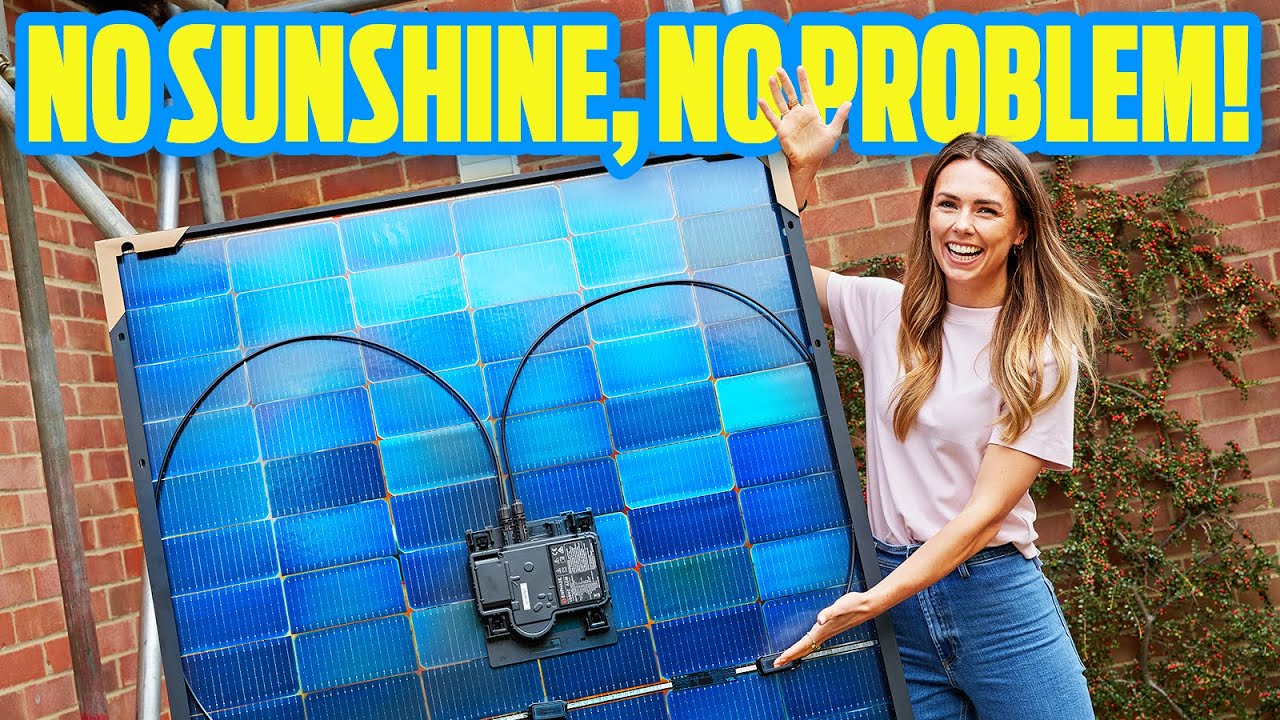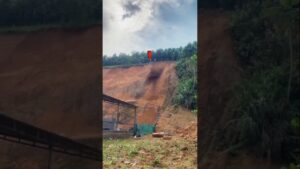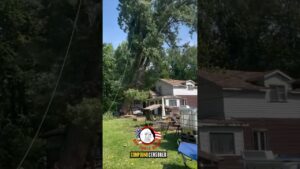
Here in the UK, we’re not always blessed with endless days of sunshine, so is getting solar a sensible addition to your home?
Well in this episode Imogen speaks with Heatable, a UK based home energy company, about the new REA Fusion 2 Bifacial solar panels and why they believe these are the perfect panel for homes where the sun doesn’t always shine.
00:00 Intro
00:38 First a Science Lesson
02:36 Introducing the REA Fusion 2
03:31 The Enphase MicroInverter
04:42 Benefits of Bifacial Panels
05:27 Advanced System Monitoring
07:11 Challenges of Solar in the UK
07:34 Get More From Your Investment
08:24 Find Out More
09:23 Solar Bonuses
Get your quote from Heatable by clicking the link below:
https://tinyurl.com/4zur58w2
And you can learn more about the REA Fusion 2 Bifacial panels here: https://www.youtube.com/@Heatable
*The eagle-eyed amongst you might have noticed the ‘includes paid promotion’ banner at the beginning of the episode. While we have staunchly avoided any paid promotion for a considerable amount of time, we are currently trialling some new approaches.
While we are unlikely to do this on a regular basis, as a business we are looking for ways to make our organisation as resilient as possible to economic conditions. And you can rest assured that we will only cover topics that we deem of interest, and that the paying organisation has no control over our editorial output. Our CEO, Dan Caesar has talked in more detail about the reasons behind this approach on a podcast that has been recorded and will be released on this channel on Monday 7th October.*
Why not come and join us at our next Everything Electric expo: https://everythingelectric.show
Check out our sister channel: https://www.youtube.com/@EverythingElectricShow
Support our StopBurningStuff campaign: https://www.patreon.com/STOPBurningStuff
Become a Fully Charged SHOW Patreon: https://www.patreon.com/fullychargedshow
Become a YouTube member: use JOIN button above
Buy the Fully Charged Guide to Electric Vehicles & Clean Energy : https://buff.ly/2GybGt0
Subscribe for episode alerts and the Fully Charged newsletter: https://fullycharged.show/zap-sign-up/
Visit: https://FullyCharged.Show
Find us on Twitter: https://twitter.com/fullychargedshw
Follow us on Instagram: https://instagram.com/fullychargedshow
To partner, exhibit or sponsor at our award-winning expos email: commercial@fullycharged.show
Everything Electric (UK) SOUTH – Farnborough International – 11th, 12th & 13th October 2024
Everything Electric AUSTRALIA – Sydney Showground – 7th, 8th & 9th March 2025
Everything Electric (UK) LONDON – ExCel – 16th, 17th & 18th April 2025
Everything Electric EUROPE, USA & (UK) NORTH – dates for 2025, 2026 & 2027 to be confirmed
#solarpanel #solarpower #homeenergy #cleanenergy
source







What about painting the roof white under the panels before you fit. Would this increase the power output?
Hats off to the production team for the very clear audio from Imogen, and the iv.
So erm, at around the 6:50 mark, the seller claims that you need micro-inverters so you can know exactly which panel is not producing… …But then he goes on to claim that 99% of the issues are software.
Pray tell what software do these solar panels run on their silicon?
Oh wait, it's going to be a software issue with the oodles of micro-inverters you needlessly installed!
Is there anything in this video that cannot be debunked?
solar in the UK? lmao
Making simple PV panels more complex seems to be a risk for failures. My rack mounted panels have been producing since 2010 and none have failed. I have 10 kW system with two 6kW inverters and they have never failed. Oversizing the inverters means that they never can be overpowered so this risk was eliminated. I think bifacial panels have their place but I'm not convinced that individual panel inverters are cost effective. If I had the choice I would buy more panels and place them at morning and evening orientations before installing bifacial panels since they are still significantly cheaper per watt.
When you buy a solar system as every house and personal requirements are different. So do your own research. Don't just listen to the salesman.
Hmm perhaps bifacial might have benefit for small roofs such as tiny homes where it's not possible to have a large array?
Im researching for large-scale production of roofing sheets printed with PV cells, the micro inverter is a very good addition
Excellent presentation for the lay person people that don’t know the Highlander and please remember kindness is always free😊
I have a 13 panel array with micro-inverters. As the house is an old Victorian Farmhouse the roof could be described as all over the place. There are 6 South East facing panels with at least one shaded by a dormer window in the early morning. There are seven South West facing panels with a large chimney stack shading one or more sometime in the afternoon. Today was a poor day for the array but I can tell the output for each panel and the best panel produced twice as much as the worst.
Its really a product for a problem that doesnt exist.
It you get hail damage or a squirrel chews the cable you have expensive replacement costs just because somebody has glued a micro inverter to the back of it.
Also will these be available in 10+ years time when you need a replacement, judging by the past you will be searching eBay in a hope of picking up a secondhand one.
So what does it really offer you over over separate items. I suspect nothing. It will save the installer time which increases their profit margin but you see no benefit.
This video strongly reeks of advertorial content. Everything Electric should be very careful about such content if they wish to retain the trust of the viewer and the consumer. If the presentation were part of a wider examination from a non self-interested expert putting forward the pros and cons in a neutral way, fine, but here, sorry, not a worthy effort. There are a lot of arguables with the claims made here. I think anyone who has looked into the solar panel/battery market will know there are a lot of chancers and cowboys in the industry and when things go wrong, they just disappear. Even big and well known companies can be guilty of pushy sales tactics and poor or misleading customer service – see the BlackBeltBarrister for his experience. https://www.youtube.com/watch?v=Oi96Lja0YMg
This video is a nonsense sales pitch
No panel on the market is making a whole array of panels fail because of one panel fail.
"If one fail – all fail" is a MYTH!
Every panel have a bypass diode in them so all panels that still work will continue produce their power.
20 volts startup voltage from one panel or 200 volts from a string of 10 panels is effectively exactly the same so claiming a lower startup voltage is very misleading.
Microinverter systems also allow staged roll out of solar to meet needs / wallet – even adding different panels later down the line – as technology changes – string inverters are only suitable for the whole "adequately sized" installation.
(NSW central coast – patchy rain today – Spring, solar faces NW – topography reasons – 24kWh produced – 18kWh exported between 6am and 5:45pm – SE string inverter with optimisers.)
Power companies are fighting back hard to reign in the ca$h drain to residential solar owners – governments are facilitating the clawback (fortunately my household has been well into the cash positive territory with solar over the last 6 years, while power ($$) rates have increased at least 50% – of course it took a capital investment, 6 years ago savings was paying negative rates and the stockmarket was going sideways – I see it as a great investment..)
Does anyone know why, if you have panels collecting light from both sides, you wouldn't put some kind of reflective coating or board between the panel and the roof?
Microinverters are such a scam… "If one fails, all will fail". Well, perhaps he haven't learned yet about bypass diodes. 200V for string inverter to start vs 20V for single panel? Well, guess what – string of 10 panels, each generating 20V gets you to 200V already. And most string inverters can start with 120-150V, btw.
Put on top the fact that the microinverter operates directly at the hot solar panel on the roof, in rain, freezing temperatures, hot temperatures, … while the string inverter is somewhere in a garage or at least shielded space…
And many people found out about the problems with warranty – you will get replacement of the microinverter, sure. But is it still compatible with the old ones you have? Or do you have to suddenly replace all of them due to one faulty? And if your installer went out of business and you don't have the same code to connect them all together?
And then add the price and we are done.
Problem with micro inverter from Enphase panels are now 430-480w and enphase biggest micro inverter maximum output in 380w so potentially losing 100 W per panel. Better off with string system with optimisers can get most of the same advantages as micro inverter.
The enphase system does AC all the way it seems.
This means that for batteries to work, they have to be AC coupled. So for any electrons to go into the batteries, the AC current has to be transformed to the DC that the battery accepts, and then to use battery power, you have to invert it back to AC.
This is shown in the data for one of their IQ batteries (the 3.3kWh one): the battery itself claims to have a 96% roundtrip efficiency, but the AC inverter that has to be included has a 89% roundtrip efficiency. For an equivalent DC system, you only do the AC conversion once, so logically and simplistically we can take the efficiency of the micro-inverter(s) and the efficiency of the battery itself as the efficiency of the whole DC system. Then we are still left with the 89% of the extra 2 inversions that the Enphase battery system has to do.
As soon as you add storage to this system, all supposed advantages of the enphase system go up in smoke… Well, heat actually…
More massive burning of jet fuel and carbon emissions flying the team back from Canada for this eposode. You guys have to start practicing what you preach or am I wrong and did you sail over Greta Thunberg style on a sail boat?
How will these panels compare to the new Perovskite panels which might be available soon? Is it worth waiting for the newer technology if the panels might be cheaper and and more efficient?
How much light passes through those small gaps and bounces off a dark slate or tile roof really? It's like 5% of the area bouncing off something with 90% absorption. OK you'll get some light coming round the edges, but still. Unless I hear otherwise I'll assume that 20% from the rear face is relevant to frame mounting on the ground or a flat roof, and the benefits of bifacial on a pitched roof are negligible. As an installer I'd also recommend not to have micro-inverters up on the roof when you could have a string inverter in your garage or loft, unless there's significant shading issues.
Everything Electric selling their soul, swapping their reputation for sponsorship deals and unnecessarily confusing people with poor technology advice
Thanks EES Team for another top video on sustainable energy. These panels seem suited to certain circumstances but need to crunch the numbers on return on investment. It might be best bang for buck to go the standard panel/inverter mix (if you have the roof space) and just spend the extra $ on more panels.
You are presenting old news as if it was new; microinverters were available since 2008. The panel backing is the only new part, but then you omit the most important effect – increased power draw. A panel is around 21% efficient, so what has that risen to with this new backing? Is it now 22% or approaching 30%? All the other guff about seeing your problem areas are available on most systems.